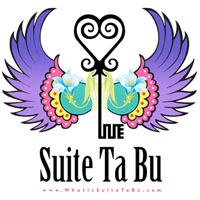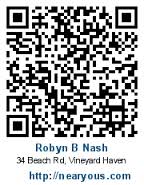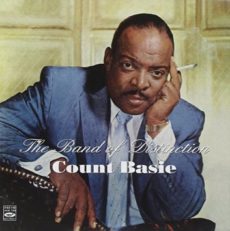
Daily Dose Of Jazz…
Count Basie was born William James Basie on August 21, 1904 in Red Bank, New Jersey. His father played mellophone, his mother piano and it was she who taught him to play the piano. She paid 25 cents for each piano lesson for him. Not much of a student in school, he finished junior high school before dropping out and spending much of his time at the Palace Theater learning to operate lights for vaudeville and to improvise accompaniment for acts and silent films at the hometown Palace Theater. Though a natural at the piano, he preferred drums but discouraged by the obvious talents of drummer Sonny Greer, who also lived in Red Bank, at age fifteen he switched to piano exclusively. By 16 years old, he increasingly played jazz piano at parties, resorts and other venues.
In 1924, Count went to Harlem, New York City where he met most of the major players including Willie “The Lion” Smith and James P. Johnson. His performing career expanded as he began touring with groups to the major jazz cities of Chicago, St. Louis and Kansas City on the Keith and TOBA vaudeville circuits. He met Fats Waller at Leroy’s cutting contest in Harlem who would teach him to play the organ and Smith gave him tips on piano technique and helped him book rent parties when times were lean. In 1929 he joined Bennie Moten’s band in Kansas City, and played with them until Moten’s death in 1935. Their tune The Moten Swing was an invaluable contribution to the development of swing.
At this point in his career he formed the Count Basie Orchestra and in 1936 they were in Chicago, Illinois for a long engagement and their first recording. Late one night they were improvising and came up with their signature tune One O’Clock Jump that stood for many years until their version of April In Paris.
He would go on to record for producer John Hammond on the Vocalion label with presiding members of the band being Ben Webster, Lester Young and Herschel Evans , Freddie Green, Jo Jones, Walter Page, Earle Warren, Buck Clayton and Harry Edison, Benny Morton and Dickie Wells.
He led the group for nearly 50 years, creating innovations like the use of two “split” tenor saxophones, emphasizing the rhythm section, riffing with a big band, using arrangers to broaden their sound, and others. Many musicians came to prominence under his direction, including Lester Young, Herschel Evans, Buck Clayton, Harry “Sweets” Edison, Paul Campbell, Tommy Turrentine, Johnny Letman, Idrees Sulieman, Joe Newman, Jimmy Wilkins, Benny Powell, Paul Quinichette and Floyd “Candy” Johnson, Marshal Royal, Ernie Wilkins and Charlie Fowlkes, as well as singers Jimmy Rushing, Joe Williams as well as recording with Ella Fitzgerald, Billy Eckstine, Frank Sinatra, Tony Bennett, Sammy Davis, Jr., Bing Crosby, and Sarah Vaughan.
He has won eight Grammy awards, had four recordings inducted into the Grammy Hall Of Fame, and has been inducted into the Long Island Hall of Fame, the Nesuhi Ertegun Jazz Hall of Fame, Down BEat Jazz Hall Of Fame, has been awarded NEA Jazz Master and has a star on the Hollywood Walk of Fame, among other awards. Pianist, organist, bandleader and composer Count Basie passed away pancreatic cancer in Hollywood, Florida on April 26, 1984.
![]()
More Posts: piano
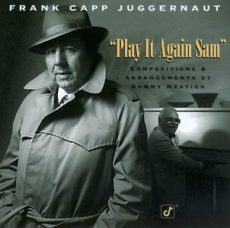
Daily Dose Of Jazz…
Frank Capp was born Francis Cappuccio on August 20, 1931 in Worcester, Massachusetts. He began playing with Stan Kenton in 1951, remaining for some time. Later he joined Neal Hefti’s group and often accompanied Peggy Lee on some of her road dates.
Capp subsequently came to Los Angeles, California where he joined Billy May. He performed and recorded with Chet Baker, Herbie Harper Quintet, Joe Pass, André Previn, J. J. Johnson, Ben Webster, Michael Nesmith, Anita O’Day, Frank Sinatra and Bud Shank among others.
Not limited to jazz he also played on numerous rock and roll sessions and is considered to be a member of The Wrecking Crew. This quintessential first-call group of musicians became Phil Spector’s de facto house band. Known as the Wall Of Sound Orchestra. They also played behind such 60s & 70s groups as Jan and Dean, Sonny & Cher, The Mamas & The Papas, Nancy Sinatra, The Byrds, The Monkees, Bob Dylan and The Beach Boys.
In 1975 together with Nat Pierce he founded the Capp/Pierce Juggernaut Band. Among the personnel have been Bill Berry, Bobby Shew, Marshal Royal, Blue Mitchell, Herb Ellis, Chuck Berghofer and Richie Kamuca, while the singers have been Ernie Andrews, Joe Williams, Ernestine Anderson and Nancy Wilson. Still led by drummer Frank Capp at age 84, the Juggernaut has proved sufficiently well founded to survive Pierce’s death in 1992.
Sponsored By
www.whatissuitetabu.com
![]()
More Posts: drums
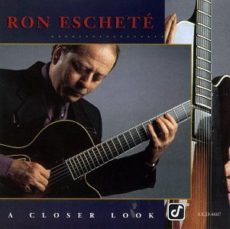
Daily Dose Of Jazz…
Ron Escheté was born in Houma, Louisiana on August 19, 1948 and after receiving his first guitar at the age of 14, he joined a quartet and was working clubs in Louisiana before he had even graduated from high school. Attending Loyola University he majored in classical guitar and minored in flute, studying with classical guitarist Paul Guma. Shortly after leaving Loyola he toured with Buddy Greco, setting his sites on the Los Angeles, California music scene.
In 1970 Ron moved to California, working and recording with vibist Dave Pike. By 1975 he joined pianist Gene Harris and quickly establish his reputation as a premier accompanist. However, it was in 1988 that he stepped into the spotlight as a leader during a gig in San Diego. That pivotal moment would lead to a contract with Concord Records and the release of his debut solo recording A Closer Look in 1994. Since then he has released more than a dozen albums as a leader.
As an educator Escheté has dedicated nearly twenty-five years teaching music at many colleges and universities, not limited to North Texas State University, Utah State University, Loyola University, Louisiana State University at New Orleans, California State Universities at Long Beach and Fullerton, and Musicianís Institute in Hollywood. He has authored three books: Melodic Chord Phrases, The Jazz Guitar Soloist and a book of Howard Roberts solos titled Super Solos.
Over the decades the consummate sideman has worked and recorded some 30 albums with among others Ella Fitzgerald, Sarah Vaughn, Diana Krall, Dizzy Gillespie, Milt Jackson, Buddy Greco, Mort Lindsey, Dave Pike, Dewey Erney, Mort Weiss, Gene Harris, and Ray Brown. Guitarist Ron Escheté continues to perform, record and tour.
![]()
More Posts: guitar
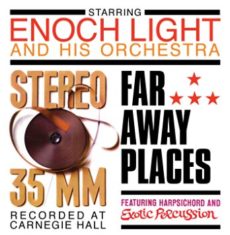
Daily Dose Of Jazz…
Enoch Henry Light was born August 18, 1905, in Canton, Ohio and became a classically trained violinist. The leader of various dance bands that recorded as early as 1927 and continued to 1940. For a time in 1928 he also led a band in Paris and in the 1930s studied conducting in Paris with French conductor Maurice Frigara.
Throughout the 1930s, Light was steadily employed in the generally more upscale hotel restaurants and ballrooms in New York mixing current popular songs with jazz. At some point his band was tagged “The Light Brigade”, often broadcasting over radio live from the Hotel Taft in New York where they had a long residency.
The 1940s saw Enoch recording for Brunswick, ARC, Vocalion and Bluebird, going on to become A&R (Artists and Repertoire) chief and vice-president of Grand Award Records, and then founded his own label Command Records in 1959. His name was prominent on many albums both as musician and producer. He revolutionized the creation of high-quality recordings in the late 1950s and early 1960s, particularly stereo effects that bounced the sounds between the right and left channels, often described as ping-pong recording. This technique had huge influence on the whole concept of multi-track recording that would become commonplace in the ensuing years.
The first of the albums produced on his record label was Persuasive Percussion, that became one of the first big-hit LP discs based solely on retail sales with little or no radio airplay because AM radio was monaural and had very poor fidelity. He did however,record several successful big band albums with an ace-group of New York studio musicians of the Swing Era.
His album covers were generally designed with abstract, minimalist artwork that stood out boldly from other album covers. Light developed the “gatefold” sleeve to fit his lengthy descriptions of the sleeve, enabling it to fold like a book, thus popularizing the gatefold packaging format. The gatefold sleeve became extremely popular in later decades, and was used on albums produced by CTI.
He would go on to work with The Free Design, The Critters, Rain, Doc Severinsen, Tony Mottola, Dick Hyman, organist Virgil Fox and arranger, Lew Davies, was one of the label’s most important contributors.
Violinist, bandleader and recording engineer Enoch Light retired from music entirely in 1974 and passed away four years later on July 31, 1978 in Redding, Connecticut.
![]()
More Posts: violin
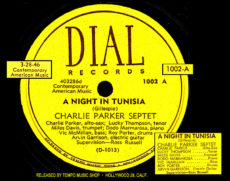
Daily Dose Of Jazz…
Arvin Charles Garrison was born on August 17, 1922 in Toledo, Ohio and taught himself ukulele at age nine and played guitar for dances and local functions from age twelve.
In 1941 Arv was leading his own band at a hotel in Albany, New York, then with Don Seat put together a trio that played on both the East and West coasts of the United States until 1948. After 1946 it was called the Vivien Garry Trio, after his wife and bassist.
Garrison recorded on Dial Records with Charlie Parker and Dizzy Gillespie, and was actively at the forefront of the early New York City bebop scene in the 1940s. Jazz critic Leonard Feather interviewed him extensively about his time spent playing with Parker. In the 1950s he returned to his hometown of Toledo and played locally.
Some of his recordings can be heard on a few anthologies, such as, the Onyx 1974 release Central Avenue Breakdown, Vol. 1 shared with Teddy Edwards and Dodo Marmarosa and includes 6 of the 8 tracks that Arv and wife Vivien Garry’s quartet recorded for Sarco Records in 1945; Swing To Bop Guitar: Guitars In Flight 1939-1947 on the Hep label that includes Arv’s famous Five Guitars In Flight recorded for Black & White Records in 1946 with Earle Spencer’s Orchestra; and The Complete Dial Modern Jazz Sessions on Mosaic Records.
Guitarist Arv Garrison passed away on July 30, 1960 from drowning during an epileptic seizure.
Sponsored By
![]()
More Posts: guitar



